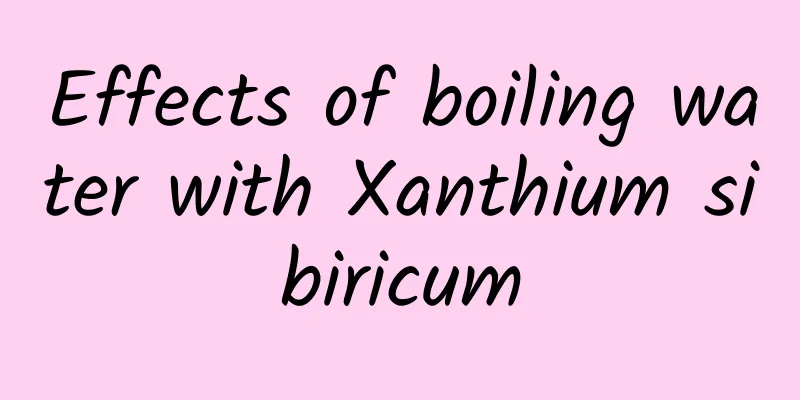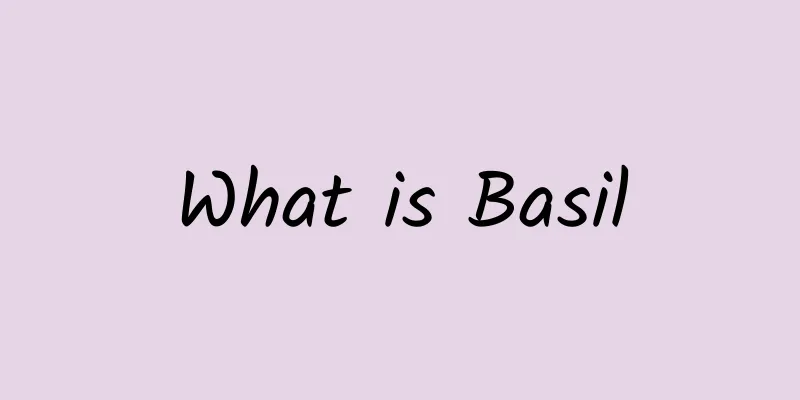Effects of boiling water with Xanthium sibiricum

|
Xanthium sibiricum is one of the most common traditional Chinese medicines used in many folk remedies for treating rhinitis. However, I believe everyone knows that Xanthium sibiricum is somewhat toxic. When using Xanthium sibiricum to treat rhinitis or other diseases, you must follow the dosage prescribed by the doctor to avoid the risk of poisoning. However, don’t worry too much. Within a safe dose, the toxicity of Xanthium sibiricum will not affect humans. Next, we will introduce to you the effects of boiling Xanthium sibiricum in water. Xanthium sibiricum is poisonous, so try to avoid taking it internally or taking it in excess. Reduce its toxic effects. 1. Long cooking: Experiments have shown that the protein and oil contained in Xanthium sibiricum are basically non-toxic when cooked at 120°; 2. Light stir-fry: Stir-fry the Xanthium sibiricum in an iron pan to destroy its toxicity in a high temperature environment. Effect: ①Treatment of low back and leg pain Make Xanthium sibiricum into 30% injection, inject 2-4 ml into the painful spot each time, once every other day, and 10 times as a course of treatment. It was used for 163 cases of low back and leg pain caused by lumbar sprain, lumbar muscle strain, sciatica, hypertrophic lumbar spondylitis, lumbar spondylosis, etc., with a total effective rate of 89%. For those with quick effects, the symptoms will be relieved after one injection, and it usually takes 3 to 5 injections to be effective. It has a good effect on acute lumbar sprain or lumbar muscle injury; but the effect is unstable for low back pain caused by sacral occult fracture and hypertrophic lumbar spondylitis. ②Treatment of allergic rhinitis After taking the medicine, most patients' symptoms disappeared or improved, or the attacks decreased. Except for a few cases where the nasal mucosa changed from pale to mildly congested, no obvious changes were found in most cases. Usage: Roast the Xanthium sibiricum into dark brown and grind into powder. Take 3-5 grams each time, 3 times a day, for 2 weeks. Or mix the powder with honey to make pills (each pill contains 3 grams of powder), take 1 to 2 pills each time, 3 times a day, for 2 weeks, and if necessary, take for 3 weeks to 2 months. The powder can also be extracted with alcohol to make tablets (each tablet is equivalent to about 1.5 grams of the original medicine), 2 tablets each time, 3 times a day, for about 2 weeks. A small number of patients experienced mild diarrhea, abdominal distension and pain, mild headache, general weakness, etc. after taking the medicine. ③Treatment of chronic rhinitis Take 30 to 40 Xanthium sibiricum fruits, break them gently, put them in a clean small aluminum cup, add 1 liang of sesame oil, bring to a boil over low heat, remove the Xanthium sibiricum, wait until it cools, and pour it into a small bottle for later use. When using, use a cotton swab dipped in the medicated oil and apply it to the nasal cavity, 2 to 3 times a day, and one course of treatment is two weeks. A total of 207 cases were treated. Except for 3 cases with no effect and 12 cases that did not persist in taking the medication, the rest were cured and their clinical symptoms completely disappeared. The longest follow-up time was 3 years, and no recurrence was observed. The above contents are about some effects of boiling water with Xanthium sibiricum. In fact, all medicines are poisonous. We need to pay special attention to the dosage when taking medicines. For toxic medicines such as Xanthium sibiricum, we must follow the doctor's prescription and try to avoid drinking water directly that has been boiled with Xanthium sibiricum to avoid poisoning. |
<<: What are the recipes for Cordyceps sinensis wine?
>>: What are the Chinese medicines for tonifying the spleen?
Recommend
They are all technical experts, so why are the photos taken by my husband so ugly, while the photos taken by it are so natural and beautiful?
Audit expert: Xu Runsheng PhD in Artificial Intel...
The efficacy and function of life grass
Life grass can dredge the meridians, promote bloo...
Ginkgo biloba is endangered? Aren’t they everywhere on the streets?
Ginkgo biloba is endangered? Aren’t they everywhe...
Xiao Jianzhong Decoction Original Recipe
The book "Classic Prescriptions and Syndrome...
What is calamus?
As various delicacies continue to infiltrate peop...
The faster you lose weight, the better? Can you lose weight by not eating staple foods? Many people fall into these misunderstandings, check yourself quickly
"I was born to gain weight even if I drink c...
Can “not eating after noon” help you lose weight? A year-long experiment found…
Reviewer of this article: Chen Haixu, Deputy Dire...
The efficacy and function of red nepeta
Many people are not very clear about the effects ...
Why are Chinese characters called “square characters”?
In the history of Chinese characters, people usua...
The efficacy and function of goose intestines
Big goose intestines are a very common Chinese me...
What are the effects of Chinese medicine Luobu Ma leaves
Luobu Ma leaf is a plant, also called tea flower ...
The efficacy and function of stone gall grass
Stone grass is a kind of Chinese herbal medicine....
The efficacy and function of stinky dan grass
Stinky angelica is a relatively common Chinese me...
A method that makes fruit taste 10,000 times better! It will be too late if you don’t try it now!
As summer is about to begin, many summer fruits a...
More than 1,800 kilometers away from the mainland, there is a pair of "eyes of the South China Sea"
The 24th Beijing Winter Olympic Games is in full ...


![The efficacy and function of Plantago asiatica[picture]](/upload/images/67ca6922597f8.webp)






